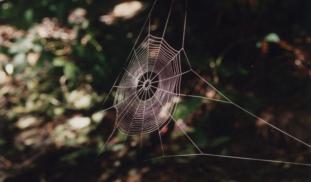Please wait...
About This Project
Silks are the toughest natural materials and spiders use them to build both its home and restaurant. Orb web shape diversified in a rapid, predictable fashion during evolution of endemic Hawaiian spiders. We aim to characterize their silk properties to test if biomaterials evolve as quickly and predictably as behaviors during adaptive radiation. This will provide important insight into the evolution of animal form and function and aid the development of spider silk-inspired fibers and adhesives.

Browse Other Projects on Experiment
Related Projects
Open technologies for the identification of local fungi for decentralized biofabrication
The use of Open Scientific Hardware and locally produced reagents would enable biomaterial-focused citizen...
Leveraging understudied spider species to uncover novel biology
Over $1.425B has been invested into spider silk companies, yet less than 20 annotated spider genomes are...
Laser directed infrared spectroscopy to analyze microplastics down to 20 microns and speed up data analysis
Microplastic analysis is a very time-consuming procedure while smaller-sized plastics (<300 microns...




